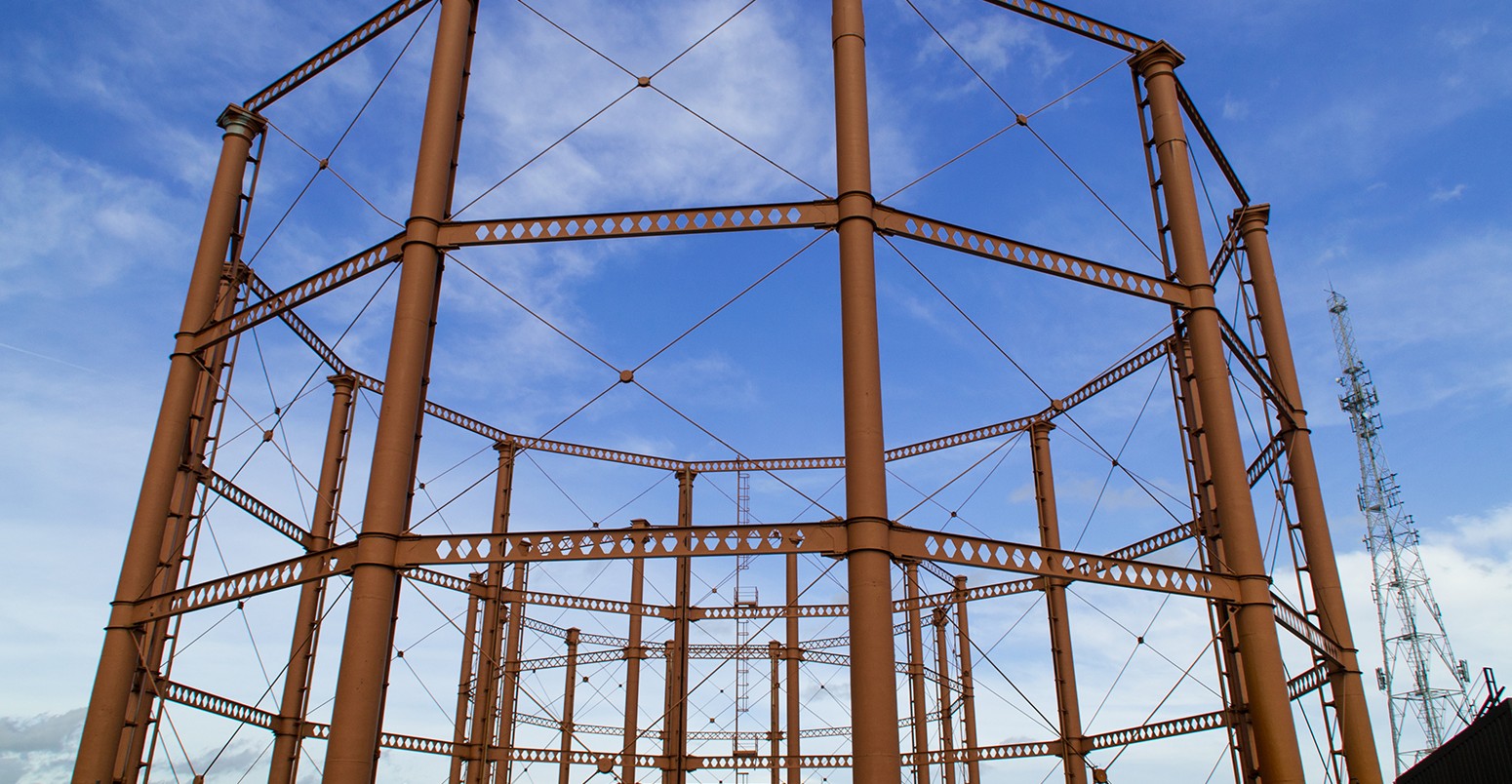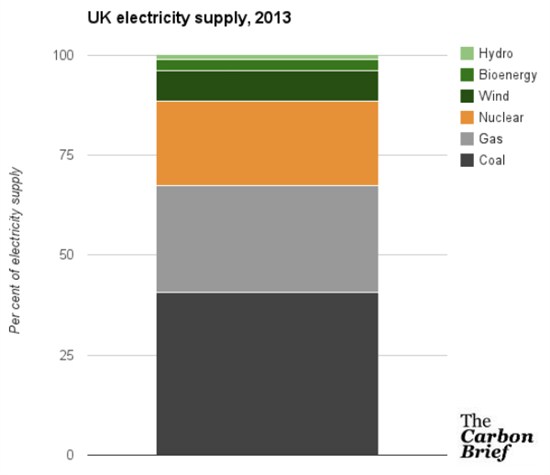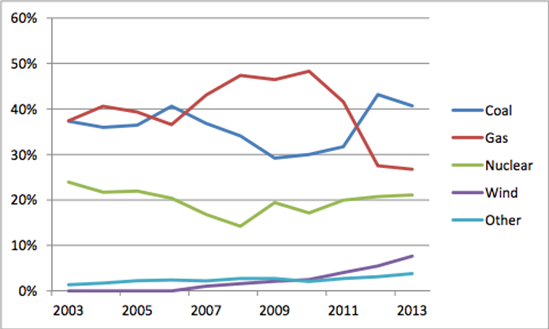
UK electricity mix in 2013: less gas, still lots of coal, but winds on the up
Robin Webster
02.27.14Robin Webster
27.02.2014 | 3:30pmThe UK sourced two thirds of its electricity from fossil fuels last year, official statistics show. Renewables still languish far behind, supplying about 12 per cent of the country’s power. But wind power is growing rapidly – increasing its market share by 38 per cent in just twelve months.
Coal accounted for 40.7 per cent of electricity supplied in the UK in 2013, according to provisional figures from the Department for Energy and Climate Change (DECC). Gas generated about a quarter (26.7 per cent) of the country’s electricity last year, and nuclear 21.1 per cent.
Wind power shows the most significant change, accounting for 7.7 per cent of the country’s electricity supply. In 2012, the figure was 5.5. per cent, so that’s a big jump in relative terms.
Gas and coal still dominate
Overall, fossil fuels still dominate the electricity mix, however. The chart below, created using DECC’s numbers, illustrates the mix. Fossil fuels are coloured grey, nuclear power orange and renewables green:
Graph created by Carbon Brief, using DECC figures
Low carbon power as a whole generated 32.7 per cent of supply, DECC says. Nuclear accounts for about two thirds of that.
Coal use falls slightly, but still higher than 2011
A year ago we were recording a dramatic increase in coal use. In 2012, coal power jumped from providing 30 per cent of the UK’s electricity supply to more than 42 per cent.
Coal use increased for a number of reasons. European Union policies limiting coal power pollution means some old coal power stations are currently being operated at a high level, before they are forced to close in 2015. And coal is cheaper in Europe at the moment, because the USA’s access to cheap indigenous shale gas means it is exporting more of its coal elsewhere.
This year, coal has fallen back slightly to 40.7 per cent of the UK’s supply. This may be because three major coal power stations – Didcot A in Oxfordshire, Kingsnorth in Kent and Cockenzie in Scotland – have already closed down. But that’s still a lot higher than 2011, DECC notes.
The amount of electricity generated by gas, in contrast, has been declining for a few years, as generators turn to coal and renewables instead. The graph below illustrates the pattern over the last decade:
The UK’s also importing more of its gas, as gas supplies in the North Sea come to an end. In 2013, UK production of gas fell by 7.3 per cent compared to the previous year. The country imported 40 per cent more gas via pipeline than it was in 2011 – most of it coming from Norway.
Today’s statistics are provisional, and exclude some renewable generation. DECC will release a more detailed analysis in about a month.



